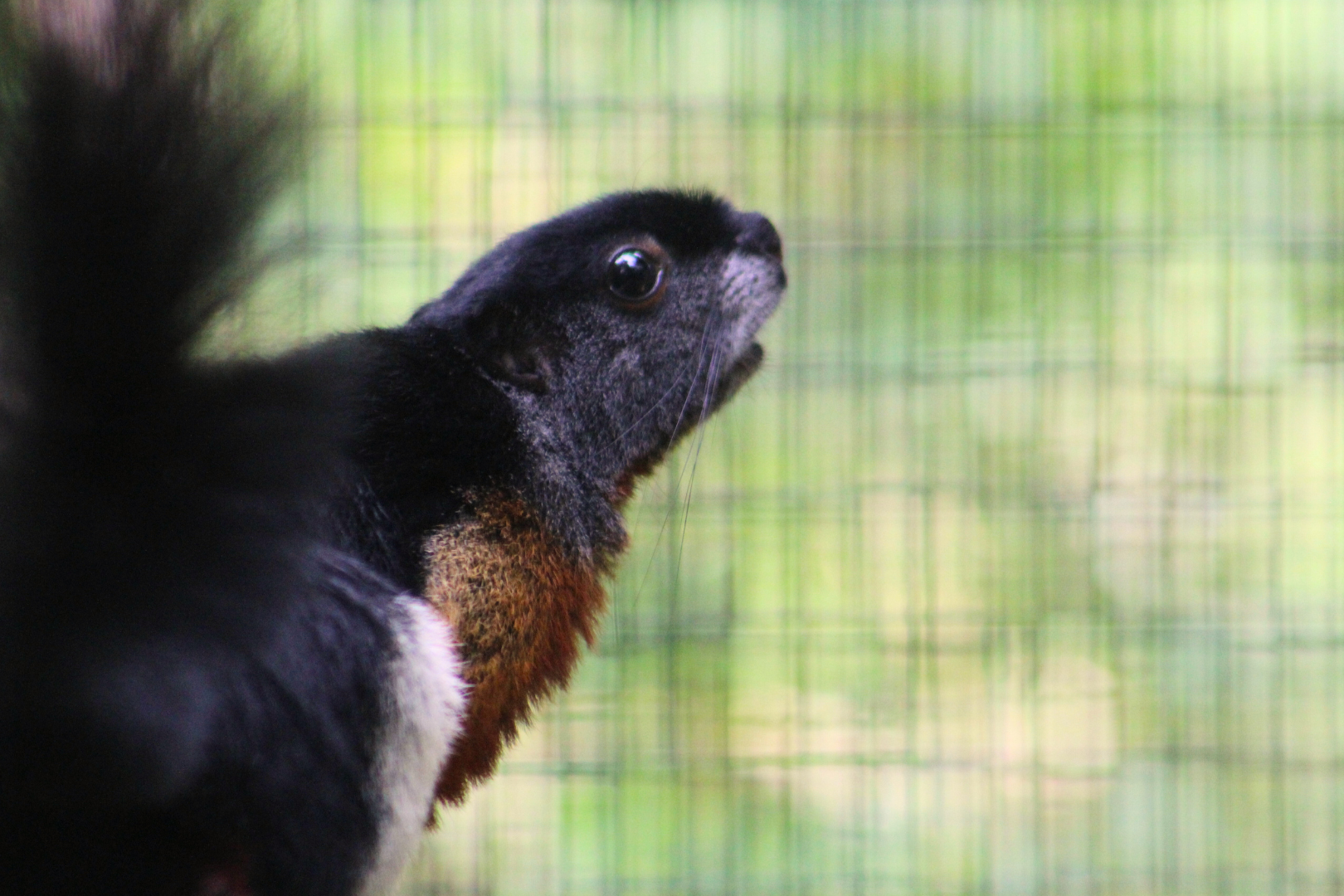I LIVE IN ASIA
The Prevost’s squirrel can be found in forests and rainforests throughout various regions of southeast Asia including Indonesia, Malaysia, and Thailand.
I AM AN OMNIVORE
This squirrel species consumes a largely herbivorous diet of fruits, nuts and flowers. However, they will also eat insects and bird eggs on occasion. This species of squirrels only has two kinds of teeth: incisors and premolars. They have a pair of incisors in the top and bottom jaw that are used to crack open seeds and eggs. Their premolars are used to chew food into tiny pieces for their stomachs to digest.
PREVOST’S SQUIRRELS ARE SOLITARY
Prevost’s squirrels prefer to live in solitude or in small family groups. Young Prevost’s squirrels are only 6 weeks old when they first begin venturing out of the burrow and away from their parents.
LOUD AND PROUD
Prevost’s squirrels are very vocal and will often communicate using a variety of high-pitched noises. They will also wave around their bushy tail as another form of communication, sometimes as a warning to other squirrels.
HELPING THE PREVOST’S SQUIRREL IN THE WILD
The Prevost’s squirrels at the Fort Wayne Children’s Zoo are enrolled in the Species Survival Plan (SSP). SSP is a program implemented by the Association of Zoos and Aquariums (AZA) to help ensure a genetically viable population exists.
I AM IMPORTANT TO MY ECOSYSTEM
Prevost’s squirrels will often carry fruit with them as they eat it. When they have finished eating, they will toss away the seeds, thus aiding in the seed dispersal of many types of fruit.

